South Sudan lies in northeastern Africa. It shares borders with Sudan, Ethiopia, Kenya, Uganda, the Democratic Republic of the Congo, and the Central African Republic.
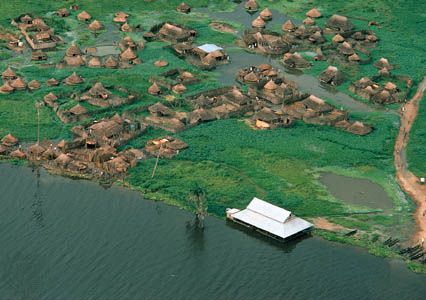 The land features plains and mountains with raised flat areas called plateaus. At the heart of South Sudan is an enormous swampy region known as Al-Sudd (the Sudd). A branch of the Nile River, the White Nile, flows south to north through the middle of the country.
The land features plains and mountains with raised flat areas called plateaus. At the heart of South Sudan is an enormous swampy region known as Al-Sudd (the Sudd). A branch of the Nile River, the White Nile, flows south to north through the middle of the country.
South Sudan is a hot country. It has a long rainy season.
Shrubs and grasses grow in the northern part of South Sudan. Tropical rainforests exist farther south.
South Sudan’s wildlife includes lions, leopards, cheetahs, crocodiles, elephants, antelope, giraffes, zebras, chimpanzees, rhinoceroses, and hippopotamuses. South Sudan has several protected nature areas, including game reserves and national parks.
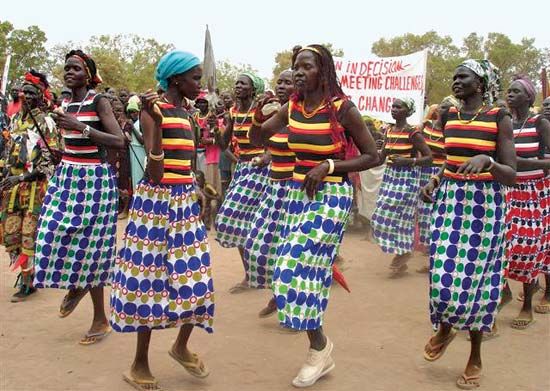 Most of South Sudan’s people are black Africans who follow Christianity or traditional African religions. The largest ethnic group is that of the Dinka. Other groups include the Nuer, the Zande, the Bari, the Shilluk, and the Anywa (Anwak). There is also a small Arab population in South Sudan. English is a common language, but South Sudan’s peoples speak many other languages. Most people live in the countryside.
Most of South Sudan’s people are black Africans who follow Christianity or traditional African religions. The largest ethnic group is that of the Dinka. Other groups include the Nuer, the Zande, the Bari, the Shilluk, and the Anywa (Anwak). There is also a small Arab population in South Sudan. English is a common language, but South Sudan’s peoples speak many other languages. Most people live in the countryside.
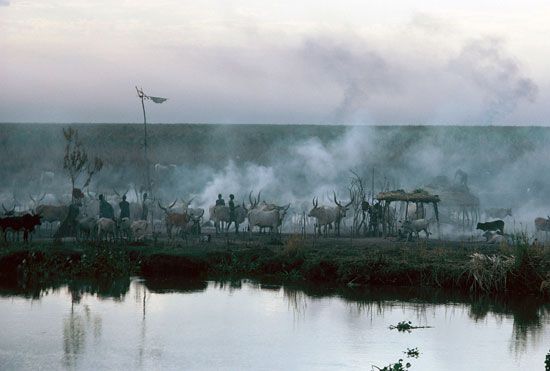 Most of South Sudan’s people work as farmers. They grow sorghum, millet, peanuts, and other crops. They raise sheep, goats, cattle, and camels.
Most of South Sudan’s people work as farmers. They grow sorghum, millet, peanuts, and other crops. They raise sheep, goats, cattle, and camels.
Sudan began selling oil to other countries in 1999. Much of the oil was in the region that became South Sudan in 2011. The new country hoped to profit from that oil. However, at the time of independence the country was very poor and did not have the facilities to process the oil. As they prepared for independence, people in South Sudan worked to improve that and all areas of the economy. They hoped to attract tourists to the region’s national parks and other areas of natural beauty.
For thousands of years the area that is now South Sudan was part of the larger region known as the Sudan. Many different peoples controlled the region at various times. Most of the settlements were in the northern part of the region, however.
By the 1400s, Arabs from Egypt had moved into northern Sudan. Egypt conquered all of Sudan in 1874. The Egyptians had British governors rule the territory. Great Britain and Egypt ruled Sudan for most of the period from 1874 until 1956. That year Sudan became independent.
Military governments, led by Muslims of the north, soon came to power. The non-Muslim peoples of the south fought against the governments. The civil war led to famines that killed thousands of people. Millions more were forced to leave the country. Finally in 2005 both sides agreed to end the fighting. Part of the agreement called for the people in the south to vote on whether they wanted to stay a part of Sudan or form their own country. In early 2011 they voted to become a separate country. The region officially became South Sudan in July of that year.





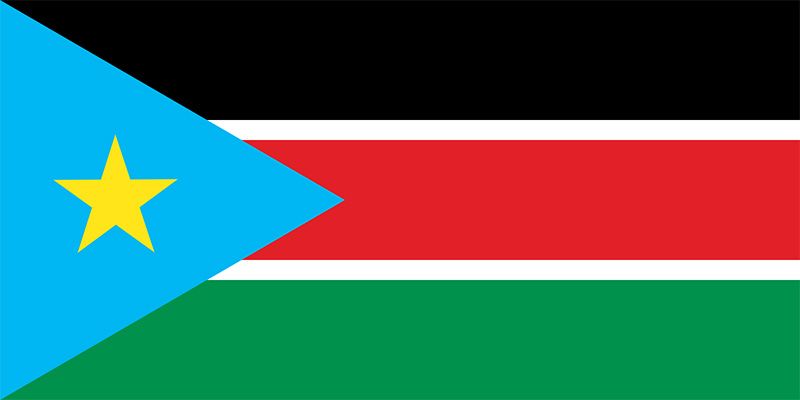
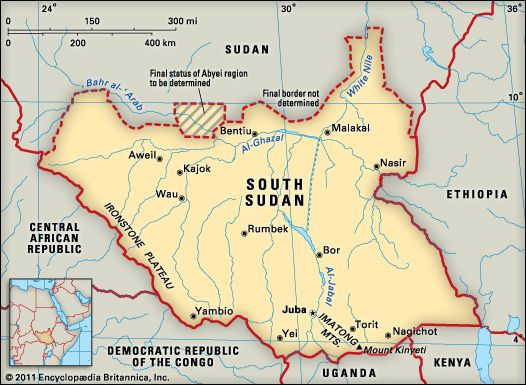
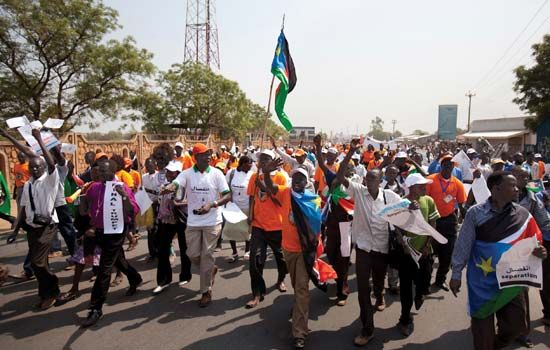 South Sudan is a country in Africa. It was a part of
South Sudan is a country in Africa. It was a part of